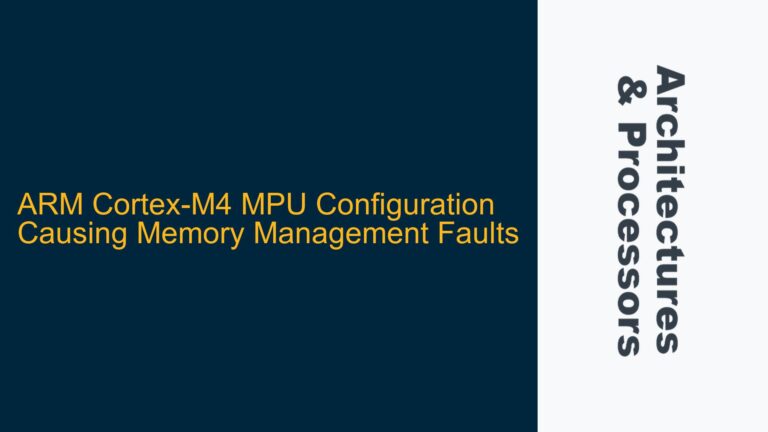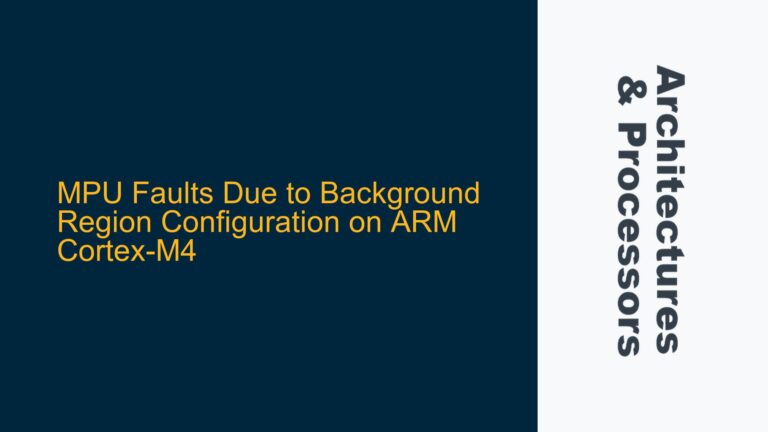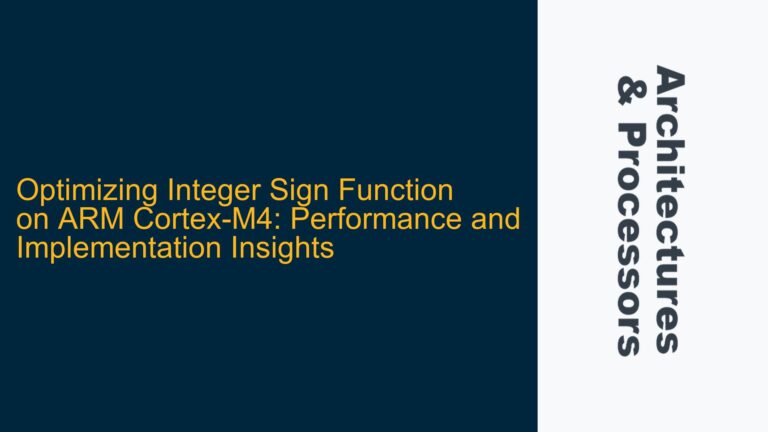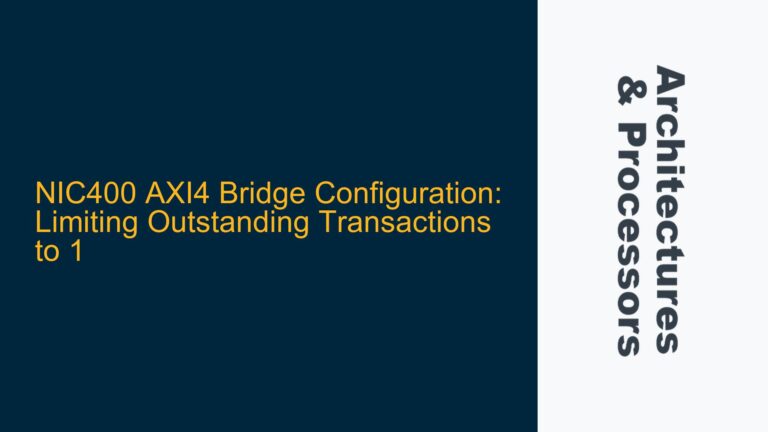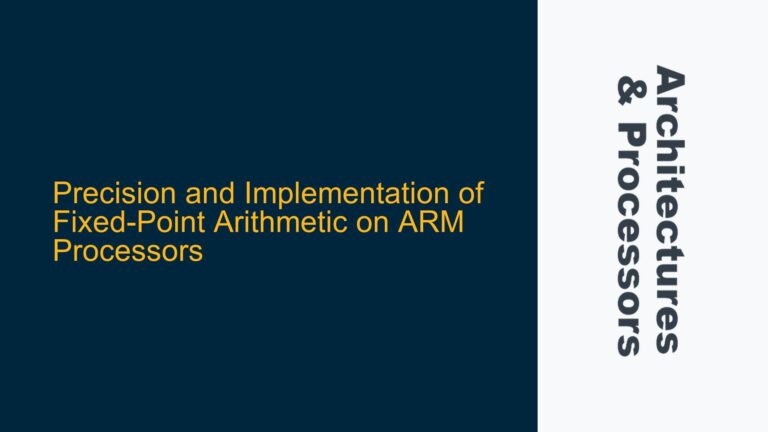Understanding ADC Cycle Timing and Microcontroller Response
When configuring an Analog-to-Digital Converter (ADC) on an ARM Cortex-M microcontroller, one of the most critical parameters to consider is the ADC cycle timing. The ADC cycle timing determines how long the ADC takes to complete a conversion, which directly impacts the performance and responsiveness of the microcontroller (MCU). The ADC cycle timing is influenced by several factors, including the clock frequency, the resolution of the ADC, and the specific configuration settings such as sample time and conversion mode.
The ADC cycle timing is typically defined in terms of clock cycles. For instance, a 12-bit ADC might require a certain number of clock cycles to complete a single conversion. If the ADC is configured with a shorter sample time, the conversion might complete faster, but the accuracy of the conversion could be compromised due to insufficient time for the analog signal to stabilize. Conversely, if the sample time is set too long, the conversion will take more clock cycles, which could lead to slower system performance and increased power consumption.
The microcontroller’s response to ADC cycle timing settings can vary depending on the specific ARM Cortex-M core and the manufacturer’s implementation. For example, some microcontrollers might have a fixed number of clock cycles for the sample and hold phase, while others might allow for more flexible configuration. Additionally, the MCU’s response to ADC cycle timing can be influenced by other system-level factors such as interrupt latency, DMA (Direct Memory Access) configurations, and the overall system clock speed.
In summary, understanding ADC cycle timing and its impact on the microcontroller’s response is crucial for optimizing the performance of ARM Cortex-M-based systems. The key is to strike a balance between conversion speed and accuracy, taking into account the specific requirements of the application and the capabilities of the microcontroller.
Potential Misconfigurations and Their Impact on ADC Performance
One of the most common issues when configuring an ADC on an ARM Cortex-M microcontroller is the misconfiguration of the ADC cycle timing. This can occur in several ways, each with its own set of consequences. For instance, if the ADC is configured with an insufficient sample time, the analog signal might not have enough time to stabilize before the conversion begins. This can lead to inaccurate readings, especially in applications where the analog signal is changing rapidly.
Another potential misconfiguration is setting the ADC clock frequency too high or too low. If the ADC clock frequency is set too high, the ADC might not have enough time to complete the conversion within the specified number of clock cycles, leading to incomplete or erroneous conversions. On the other hand, if the ADC clock frequency is set too low, the conversion process will take longer, which could result in slower system performance and increased power consumption.
Additionally, the choice of ADC resolution can also impact the performance of the ADC. Higher resolution ADCs require more clock cycles to complete a conversion, which can lead to longer conversion times and increased power consumption. However, higher resolution ADCs also provide more accurate readings, which might be necessary for certain applications. Therefore, it is important to carefully consider the trade-offs between resolution, conversion speed, and power consumption when configuring the ADC.
Another common issue is the improper configuration of the ADC’s reference voltage. The reference voltage determines the range of the analog input signal that the ADC can convert. If the reference voltage is set too high, the ADC might not be able to accurately convert low-level signals. Conversely, if the reference voltage is set too low, the ADC might saturate when converting high-level signals, leading to inaccurate readings.
In summary, misconfigurations in ADC cycle timing, clock frequency, resolution, and reference voltage can all have a significant impact on the performance of the ADC and the overall system. It is important to carefully review the manufacturer’s documentation and application notes to ensure that the ADC is configured correctly for the specific requirements of the application.
Best Practices for Configuring ADC Cycle Timing and Optimizing MCU Response
To ensure optimal performance of the ADC and the microcontroller, it is important to follow best practices when configuring the ADC cycle timing and other related parameters. The first step is to carefully review the manufacturer’s documentation and application notes for the specific ARM Cortex-M microcontroller being used. This documentation will provide detailed information on the ADC’s capabilities, recommended configurations, and any potential pitfalls to avoid.
One of the key considerations when configuring the ADC cycle timing is the sample time. The sample time should be set long enough to allow the analog signal to stabilize before the conversion begins, but not so long that it unnecessarily delays the conversion process. The manufacturer’s documentation will typically provide guidelines on the minimum sample time required for different ADC resolutions and clock frequencies.
Another important consideration is the ADC clock frequency. The ADC clock frequency should be set to a value that allows the ADC to complete the conversion within the specified number of clock cycles, while also taking into account the overall system clock speed and power consumption requirements. It is often beneficial to use a clock prescaler to adjust the ADC clock frequency to an optimal value.
The choice of ADC resolution is another critical factor. Higher resolution ADCs provide more accurate readings, but they also require more clock cycles to complete a conversion. Therefore, it is important to carefully consider the trade-offs between resolution, conversion speed, and power consumption when selecting the ADC resolution. In some cases, it might be beneficial to use a lower resolution ADC if the application does not require high accuracy.
The reference voltage is another important parameter to consider. The reference voltage should be set to a value that provides the necessary range for the analog input signal, while also taking into account the ADC’s input voltage range and the specific requirements of the application. It is often beneficial to use an external reference voltage if the application requires high accuracy or if the internal reference voltage is not sufficient.
In addition to these configuration parameters, it is also important to consider the overall system architecture and how the ADC interacts with other components such as interrupts, DMA, and the system clock. For example, if the ADC is configured to use DMA, it is important to ensure that the DMA controller is properly configured to handle the ADC data without causing bottlenecks or data loss. Similarly, if the ADC is configured to generate interrupts, it is important to ensure that the interrupt service routine (ISR) is optimized to minimize latency and avoid missing conversions.
In summary, configuring the ADC cycle timing and optimizing the microcontroller’s response requires careful consideration of several factors, including sample time, clock frequency, resolution, reference voltage, and system architecture. By following best practices and carefully reviewing the manufacturer’s documentation, it is possible to achieve optimal performance and ensure that the ADC meets the specific requirements of the application.
Advanced Techniques for Fine-Tuning ADC Performance
For applications that require even greater precision and performance, there are several advanced techniques that can be used to fine-tune the ADC configuration. One such technique is the use of oversampling and decimation. Oversampling involves taking multiple samples of the analog signal and averaging them to reduce noise and improve accuracy. Decimation is the process of reducing the sample rate by discarding some of the samples. When used together, oversampling and decimation can significantly improve the signal-to-noise ratio (SNR) and the overall accuracy of the ADC.
Another advanced technique is the use of calibration. Many ARM Cortex-M microcontrollers include built-in calibration features that can be used to compensate for any offset or gain errors in the ADC. Calibration typically involves applying a known reference voltage to the ADC and adjusting the ADC’s internal registers to correct any errors. Some microcontrollers also support automatic calibration, which can be triggered periodically or in response to specific events.
In addition to calibration, some microcontrollers support advanced features such as differential mode and temperature sensing. Differential mode allows the ADC to measure the difference between two analog signals, which can be useful in applications such as bridge sensors and current sensing. Temperature sensing allows the ADC to measure the internal temperature of the microcontroller, which can be useful for thermal management and compensation.
Another advanced technique is the use of hardware averaging. Some ARM Cortex-M microcontrollers include hardware averaging features that allow the ADC to automatically average multiple samples and provide a single result. This can be useful for reducing noise and improving accuracy without requiring additional software overhead.
Finally, it is important to consider the impact of the PCB layout and external components on the ADC’s performance. Proper grounding, shielding, and decoupling are essential for minimizing noise and ensuring accurate ADC readings. Additionally, the choice of external components such as resistors, capacitors, and op-amps can have a significant impact on the ADC’s performance. It is important to carefully select these components and follow the manufacturer’s recommendations for optimal performance.
In summary, advanced techniques such as oversampling, calibration, differential mode, temperature sensing, hardware averaging, and careful PCB layout can be used to fine-tune the ADC’s performance and achieve even greater precision and accuracy. By leveraging these techniques and carefully considering the specific requirements of the application, it is possible to achieve optimal performance and ensure that the ADC meets the highest standards of quality and reliability.
Troubleshooting Common ADC Configuration Issues
Despite careful configuration and optimization, it is not uncommon to encounter issues with the ADC’s performance. One of the most common issues is inaccurate readings, which can be caused by a variety of factors such as insufficient sample time, incorrect reference voltage, or noise in the analog signal. To troubleshoot this issue, it is important to first verify that the ADC is configured correctly and that the sample time and reference voltage are set to appropriate values. If the issue persists, it might be necessary to use oversampling or hardware averaging to reduce noise and improve accuracy.
Another common issue is slow conversion times, which can be caused by an insufficient ADC clock frequency or an overly long sample time. To troubleshoot this issue, it is important to verify that the ADC clock frequency is set to an appropriate value and that the sample time is not unnecessarily long. If the issue persists, it might be necessary to adjust the clock prescaler or use a lower ADC resolution to reduce the number of clock cycles required for each conversion.
In some cases, the ADC might not generate interrupts or DMA requests as expected. This can be caused by incorrect configuration of the ADC’s interrupt or DMA settings. To troubleshoot this issue, it is important to verify that the ADC is configured to generate interrupts or DMA requests and that the corresponding interrupt or DMA controller is properly configured. If the issue persists, it might be necessary to review the microcontroller’s documentation and application notes for additional guidance.
Finally, it is important to consider the impact of external factors such as temperature and power supply noise on the ADC’s performance. Temperature variations can cause changes in the ADC’s offset and gain, leading to inaccurate readings. Power supply noise can also affect the ADC’s performance, especially in applications with high-speed digital circuits. To mitigate these issues, it is important to use proper thermal management techniques and ensure that the power supply is well-regulated and properly decoupled.
In summary, troubleshooting common ADC configuration issues requires a systematic approach that involves verifying the ADC’s configuration, adjusting key parameters, and considering the impact of external factors. By carefully analyzing the issue and following best practices, it is possible to identify and resolve the root cause of the problem and ensure that the ADC performs as expected.
Conclusion
Configuring the ADC on an ARM Cortex-M microcontroller is a complex task that requires careful consideration of several factors, including ADC cycle timing, clock frequency, resolution, reference voltage, and system architecture. By following best practices and leveraging advanced techniques, it is possible to achieve optimal performance and ensure that the ADC meets the specific requirements of the application. Additionally, by systematically troubleshooting common issues and considering the impact of external factors, it is possible to identify and resolve any problems that arise and ensure that the ADC performs reliably and accurately. With the right approach and a thorough understanding of the ADC’s capabilities and limitations, it is possible to achieve the highest standards of performance and reliability in ARM Cortex-M-based systems.

